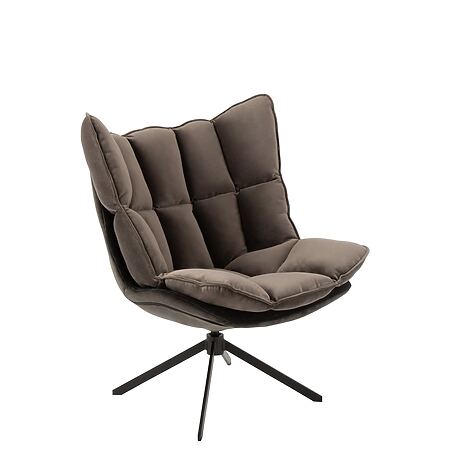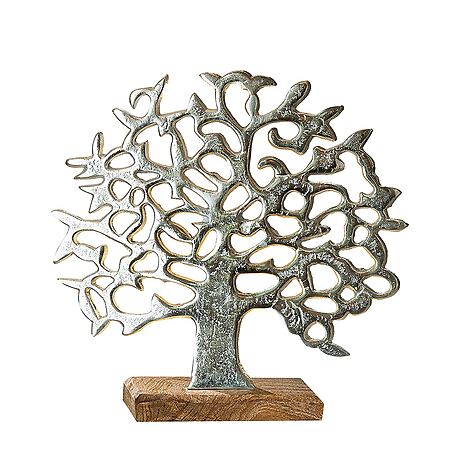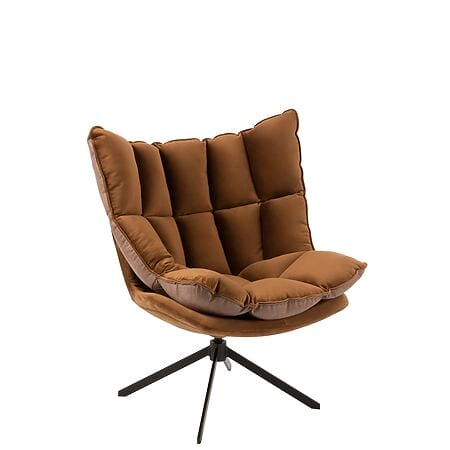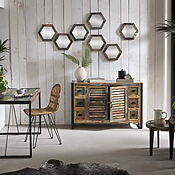In our modern lives, daily pressures, an often chaotic lifestyle, and an overstimulation of our attention and senses are omnipresent. Therefore, it's a relief to have a home that 's designed simply yet authentically
A place where both the overall design and the smaller details have a clear intention. Everything has a purpose and remains true to his essence. It is possible to create a home that stands out but is reserved in its facility by focusing on a few main features and a simple concept.
There aren't just practical tips available to combat daily chaos and constant overstimulation. There are entire interior design styles dedicated to reduction and simplicity. Alongside minimalism, natural purism Wabi-Sabi is right at the forefront .

photo by Jason Wang @coohom, via unsplash
Last but not least, puristic design was shaped by Eastern European designers. Puristic design can also be imagined as a Bauhaus modern. It radiates a feeling of cheerful melancholy. Puristic design is gained in importance in both North America and on this side of the large pond. It is easy to see from its combination of natural forms, clear structures, reserved colors, as well as wood and raw organic elements. Hence the name - puristic .
It is one of those design concepts that you recognize when you see it. And there are numerous ways to implement this furnishing style.
Purismus - origins and core elements
In a nutshell, purism was a movement created around 1918, which suggested a kind of painting, in which objects are presented as powerful basic forms without details. This art movement lasted around 1925.
The movement was founded by Edouard Jeanneret (better known as the modern architect Le Corbusier ) and Amédée Ozenfant . In their book après le Cubisme, (after cubism ), they presented the theory of purism. They criticized the fragmentation of the object in cubism and the way in which cubism had become decorative at that time.
Instead, they proposed a kind of painting in which objects are presented as powerful basic forms without details. Fernand Léger was another key artist who was associated with purism.
Especially after the end of the First World War it was found that purism represents order, wholeness, balance and clarity in works, very similar to the classic art periods. Allusions to the ancient Greek architecture can be found in the cannulas (similar to a Greek column) on the bottles in octopuses.
A crucial element of Purism was the embrace of technology and machinery, aiming to endow mechanical and industrial objects with a timeless, classical quality. The metallic surfaces of machines and the columns of architecture were depicted in simple geometric forms. They are considered a rejection of the ornamentation seen in many works and a rejection of the inherent notion of beauty of the early 20th century.
Purism culminated in Le Corbusiers Pavillon de L'Esprit Nouveau (Pavilion of the New Spirit), which was built in 1925 for the international exhibition for decorative and industrial art in Paris. This was hung up by the three clients with work, including the Cubists Juan Gris and Jacques Lipchitz .
From 1920 to 1925, the artists produced a magazine called L'Esprit Nouveau , which served as a propaganda machine for the movement they had created.
Unfortunately, Purism wasn't very profitable for Le Corbusier and didn't bring him much money. At the same time, his work as an architect collapsed, and he eventually went bankrupt. While these losses may have been considerable, they were less severe due to his rising reputation in the art world.
Despite Le Corbusier's financial problems and debts, he became one of the most prominent artists, designers and architects of the 20th century, thanks to his artistic movement and its resonance with architectural design.
Le Corbusier's Pavillon de l'Esprit Nouveau, reconstruction in Bologna, 1977
Then the key relationship between Ozenfant and Le Corbusier broke up, which heralded the end of this young art movement.
Guide and central elements of original purismus
- Purism reduced the topic to the relationships of its geometric angles and shapes that were further emphasized by color in order to achieve a uniform effect. These "pure" forms were composed of their intrinsic qualities and lacked any representative importance. This infiltrated all aspects of the arts, including painting, design and architecture.
- With the rise of technology and the machine age, purist artists strove mechanical and industrial objects with a timeless quality . This influenced work that incorporated references to old, classical forms without decoration or additional ornamentation.
- Still life painting became a popular form of articulating purist philosophies. In this genre, artists took types of objects or reproducible everyday items from their own environment and reduced them to aesthetically pleasing forms that emphasized the simple beauty of the modern world .
- As a perfect time capsule of the movement, the international exhibition for decorative and industrial art in Paris Le Corbusier, Ozenfant, Fernand Léger presented their partnership next to the Cubists Juan Gris and Jacques Lipchitz, whereupon Ozenfant and Le Corbusier ended their partnership. Ironically, this was the birth of the Art Deco movement .
- Purism rejected the excessive ornamentation and decoration that characterized bourgeois society's concept of beauty at the time. The movement, and especially Le Corbusier's advocacy of simplification and modulation of form, influenced generations of artists and architects who were interested in mass production and classical order in art, construction, design, and even the construction of urban plans.
Purism in the modern interior - the magic of omission
The purist is someone who lives with few things and creates more space for others. Their furnishings are minimalist and pared down. However, this doesn't necessarily mean they have to appear cold and empty. The motto is: not too much, but also not too little. Natural materials, especially untreated wood and natural textiles like wool and linen, create a sense of comfort, coziness, and warmth.
Clear parallels can be drawn here to the Hygge lifestyle and Scandi-chic interior design style .
The special charm of a puristic interior is also to be less "loud" so that the eye, mind and soul can come to rest. A puristic space gently whispers to the residents.
The conscious waiver refers to the number of things and, in a way, to the manufacturing process of residential objects, furniture and accessories. Their functionality is held. High -gloss surfaces, plastic and the like are omitted or cleverly hidden if possible.

photo of TU TU @tutuwords, via Unsplash
We find the special charm of high -quality and durable natural materials in the fact that it age with dignity. Over time, many start a characteristic patina that gives additional charm.
, for perfectionists and lovers of linearity, the natural purism à la Wabi-Sabi organic forms themselves break with linearity and a love of geometric order.

Photo by Khloe Arledge @khloephoto, via unsplash
Round baskets and boxes with rounded corners also ensure quick, lived order. They can find a place freely in the room and enter into a natural connection. Sideboards and shelves in reduced designs are provided for storage space .
Wabi-Sabi-Beauty in every aspect of imperfection in nature
Speaking of which: Wabi-sabi, which is closely associated with purism in modern interior design and furnishing, is a Japanese aesthetic concept (the notion of the perception of beauty). Rooted in Zen Buddhism , it is a counterpart to the first of the Buddhist Four Noble Truths, dukkha.
wabi-sabi is the view or idea of finding beauty in every aspect of imperfection in nature. It is concerned with the aesthetics of things known as "imperfect, impermanent, and incomplete."

Photo by Annie Spratt @anniespratt, via Unsplash
It is a gentle way to appreciate the natural and pure and to recognize the beauty of every substance or every being in its most natural and rawest form. It eliminates the rather wasted concept of artificial beauty.
Interior Design | Modern Wabi-Sabi Home Tour
A deeper examination of this term and the Far Eastern philosophy behind it can be found in the article: "What does Wabi Sabi? | Philosophy, Art and everyday life" of Sakura News .
This is how the puristic furnishing style à la Wabi-Sabi succeeds in your own four walls
It is possible to create a dating home that impresses with the special charm of purism, and is always gentle and reserved in its entirety. Place your focus on a few main features and follow the following tips so that the furnishing style in your home succeeds wonderfully.
01 high -quality materials
"less is more" and "quality over quantity" apply .
High -quality materials such as a marble backdrop in your kitchen will survive the time and are therefore a clever investment and a significant design element that exudes self -confidence and elegance in a reserved way.
Gross materials and soft surfaces may be expressly combined. It is the interplay of different textures that take a puristic home the soberness and lets the homeliness pull in. A mix of different natural materials (natural wood, stone, sound, bast, ...) works best.
They are the focal point of any room, and if you give them room to flourish, you can fully embrace the art of minimal living.

photo of r architecture @rarchitecture_melbourne, via unsplash
The bathroom receives considerable attention. Round, freestanding bathtubs made of marble or natural stone are a popular choice in the Wabi-Sabi style.
You can find inspiration for puristic bathrooms in our Pinterest collection.
(To display the Pinterest Board you must have approved the cookies)
Chic combinations of metal and oak beautifully complement the furnishings of a modern bathroom in the wabi-sabi style. The combination of black metal and naturally grained wood, in particular, creates a captivating character.
polyresin material is often used. It is a liquid synthetic resin that is also generally referred to as an alabrite, cast marble, marble, poly-nature, or polystone.
02 architectural details
Clean open spaces create clarity and order in the apartment, and with a disciplined facility, they bring the form and function of their home effortlessly and easily.
Architectural details such as high ceilings, various windows and open floor plans ensure space, light and air that promote a clear and clean lifestyle. Smaller details, such as B. flat panels in their cupboards instead of door handles that can distract the eye and create disorder, present a clean and neutral, puristic yet practical style.
03 a touch of luxury
The inclusion of luxurious details in their furnishing is an effective element in a puristic and minimalist home.
Symbolized by high -quality materials such as marble, copper, brass, wood and concrete, luxurious surfaces in your home give character and context and combine a modern feeling with a natural style.
04 reserved colors
Scandinavian-inspired interiors are known for their minimalism, with white being a defining trademark. Recently, however, this approach to interior design has welcomed color, albeit mostly muted shades such as creams , cool grays , and pastels .
Adding one or two vibrant accent colors to your room can impact the tone and feel. It can also contribute to the light and airy quality of a minimalist home, but with a touch of personality.
05 contrasts in textures and shapes
Texture and form are crucial in purist and minimalist designs as they add visual relevance to a space and take interiors to the next level.
If your space has a rather homogeneous color palette, the introduction of different textures and forms will ensure visual interest and at the same time maintain the balance in your design.
A white kitchen with clear lines and unobtrusive design can be increased by a single brick wall and create a warm atmosphere that is as calm as it is engaging.
06 light design
Lighting design also plays a crucial role in purist interior design. Natural light should be utilized as much as possible. Subtle light sources create an atmospheric mood as dusk falls.
The top rule here is to insert organically shaped light sources into the room. Luminaires made of wood are also available because they give a warm light. Light sources with a porcelain or glass screen also fit well.
The natural coziness of Wabi-Sabi should be emphasized with appropriate lighting design.
Wabi-Sabi furnishing design-inspiration and suggestions
01 video tour
02 Pinterest collection
(To display the Pinterest Board you must have approved the cookies)
03 furniture, design objects and home accessories in the Wabi Sabi style in our decor shop.
Discover unique furniture, design objects, and home accessories in the charming Wabi-Sabi style in our decor shop

New York 2.5-seater modular sofa, beige
Original price was: €2,200.001.900,00 €Current price is: 1,900.00 €.
Add to Cart

Add to cart: "Limited acoustic art \"Floral Woman\" (140x140cm) - woven textile art on stretcher, sound-absorbing"239,95 €Current price is: 239,95 €.
Add to Cart

Owner and Managing Director of Kunstplaza. Journalist, editor, and passionate blogger in the field of art, design, and creativity since 2011. Successful completion of a degree in web design as part of a university study (2008). Further development of creativity techniques through courses in free drawing, expressive painting, and theatre/acting. Profound knowledge of the art market through years of journalistic research and numerous collaborations with actors/institutions from art and culture.

































